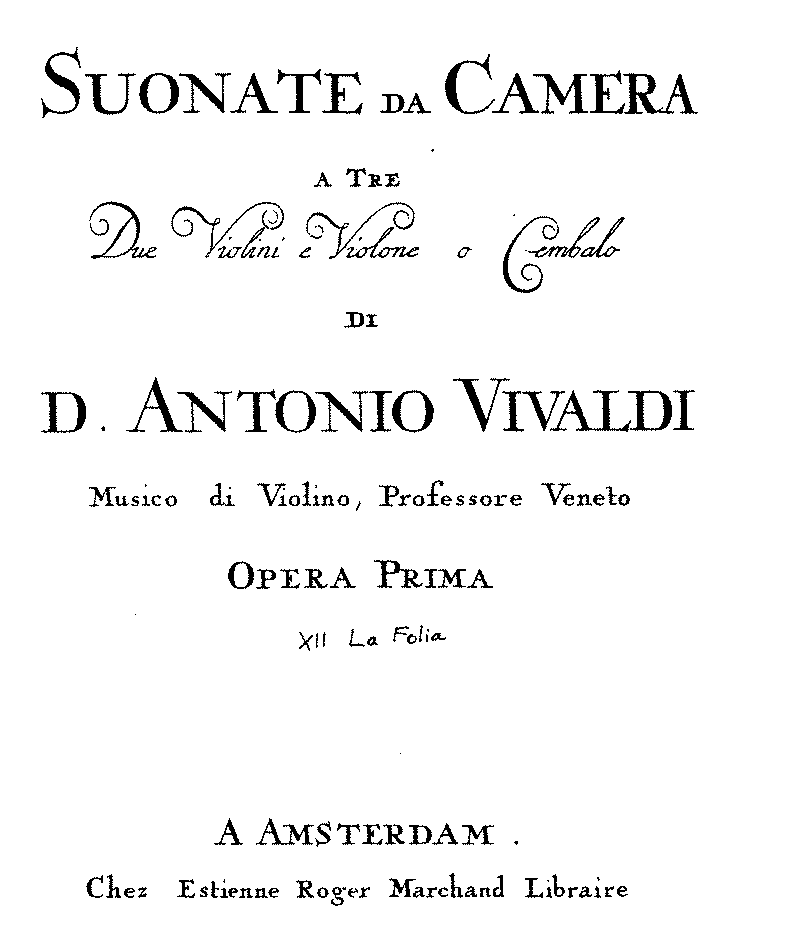Until the 20th century, there was no concept of an existing musical canon such as we think of it today. Composers, musicians, and audiences in earlier eras were focused solely on the contemporary, to the point that that after J.S. Bach’s death, original copies of his manuscripts were sold by his heirs for the value of the paper they were printed on, and in turn were known to turn up as wrappers at fish and cheese markets throughout Leipzig. (Ironically, Bach himself was an exception to this rule, as he was known to have an extensive collection of his own transcriptions of works of the music of prior generations, though much of those were lost to history as well).

Arcangelo Corelli was known in his day as”the prince of musicians”
A great shift in this mindset began on New Year’s Day on the dawn of the 18th century with the publication of Arcangelo Corelli’s Twelve Violin Sonatas, Op. 5 (Sonate a violino e violone o cimbalo). Corelli was a dominant figure in the European music world—an Italian violin virtuoso and composer whose music was central in the establishment of the sonata and concerto genres as we know them today, and for placing the violin as the featured instrument within those forms. This was the penultimate of only six collections published during his lifetime, and it stands out for the fact that its popularity outlived its composer, who died in 1713—it was in fact republished, performed, and revered throughout the entirety of the 18th century.


Cover of the first edition of Corelli’s Twelve Violin Sonatas, Op. 5 (1700)
The last sonata, No. 12, is a set of variations on the theme La Folia, which is one of the oldest recorded musical themes in European music. The earliest known record is by Spanish music theorist and organist Francisco de Salinas Portuguese in his 1577 treatise De musica libri septem, though it undoubtedly predated that publication. La Folia refers to a musical structure and chord progression rather than a specific theme or melody, and given its popularity throughout the centuries, composers and musicians alike were familiar with the form and expected to be able to write and improvise their own variations (similar to a modern 12-bar blues or “rhythm changes”). Corelli’s publication of his own variations were extremely popular, and so a young Antonio Vivaldi may have been hoping to earn a bit of that marketability himself when he published his own set of Twelve Trio Sonatas just a few years later, in which the the last sonata, No. 12, was a set of variations on that same La Folia theme.
Following in the footsteps of Corelli, Vivaldi was a masterful violinist himself, and so he composed his variations for two violinists with no shortage of fireworks in the upper registers. In this performance at a 2022 Celebrity Series concert, those parts are handled with aplomb by Shannon Lee and Angela Chan – both Heifetz alumni, special guest artists, and finalists in the Shanghai Isaac Stern International Violin Competition. The remaining part of the trio as written was for cello continuo, which was responsible for establishing the recognizable progression and theme of La Folia, performed by Heifetz faculty cellist and early music specialist Guy Fishman.. For this presentation, we actually offer up a quintet—adding Peter Blanchette on archguitar and Florence Jowers on portative organ, both improvising figured bass alongside the cello.


A 1723 publication of Vivaldi’s 12 Trio Sonatas, Op.1


